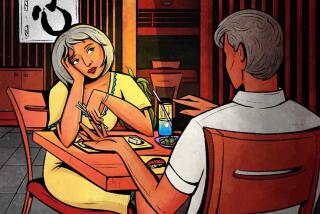Not Just for Kids: Inside every prince, a bumbling idiot
- Share via
The Hero’s Guide to Saving Your Kingdom
A Novel
Christopher Healy
HarperCollins: 432 pp., $16.99, ages 8 and up
Whether it’s Cinderella or Snow White, Rapunzel or Sleeping Beauty, princes play a key role in the happily ever afters of fairy tales. But what happens once these dashing young lads have swooped in to save their distressed damsels? What if, as Christopher Healy theorizes with his cheeky middle-grade debut, these princes turned out to be insufferable losers?
“The Hero’s Guide to Saving Your Kingdom” exploits the abundant gray area of our most popular fairy tales, giving names to the many princes who are best known for merely dancing or showing up in the right place at the right time and filling in the details of their true characters.
It’s clear from the first line that “The Hero’s Guide” is a far cry from the Brothers Grimm or Disney: “Prince Charming is afraid of old ladies.... [He] has no idea how to use a sword,” Healy writes on the opening page, setting the tone for a book that challenges every presumption readers have ever had not only about Cinderella’s savior but about the nameless princes who brought enduring bliss to other fairy tales’ forever-young heroines.
Prince Charming, a.k.a. Prince Frederic, has been pampered from the day he was “placed into the delicate swishiness of a pure silk bassinet.” He is, in a word, a wimp whose riskiest endeavor is picnicking on his estate’s well-manicured lawn. But when he receives a Dear John letter from Cinderella announcing her plans to get together with the more adventuresome Rapunzel, he is forced to go after her to save face.
The book then moves on to Prince Gustav, “the jerk who got beaten by an old lady and rescued by a girl” after Rapunzel’s captor defenestrated him from the tower. A burly, self-pitying sad sack, Gustav partners with Frederic to locate Cinderella, who’s had the misfortune of being captured by the same evil witch who once held the girl with the long, golden hair.
Along the way they meet Prince Duncan, an inept man-child who overcame his misgivings about kissing a complete stranger in a glass coffin, and Prince Liam, an egomaniac who rescued Sleeping Beauty only to discover she was an un-marriage-worthy brat who employed toddlers to make stained glass windows and ate breakfasts cooked with endangered hummingbird eggs.
Healy’s cross-pollination of the Grimm’s canon is one of the more clever, hilariously successful incarnations of the current literary rage to rip apart and rewrite fairy tales. If the Three Stooges were four princes and lived in medieval times, their story might read like “The Hero’s Guide” — a contrarian and ribald lesson in what not to do.
Each chapter and its title reveal exactly how unheroic the princes truly are. In the chapter “Prince Charming Has No Idea What’s Going On,” Frederic has lost track of his bride, Cinderella. In “Prince Charming Has No Sense of Direction,” Duncan wanders off from Snow White.
“The Hero’s Guide” is populated with the usual fairy-tale supporting cast, including trolls (who, as Healy brings to light, are vegetarian), dwarfs, a dragon, a giant, a witch and, in a Shakespearean twist, the bards who’ve victimized the princes by spreading misinformation in story-songs that make them look like the fools they actually are.
Just as Healy questions the assumption that fairy-tale princes are heroes, he also turns the tales’ female characters on their heads. Cinderella and the story’s other fair maidens aren’t merely oppressed beauties as they’ve long been portrayed. With the exception of that haughty tart, Sleeping Beauty, they’re spirited and intelligent heroines who, unknown until now, are perfectly capable of taking care of themselves.
Healy’s writing brings readers along in his questioning of why these fairy tales were written as they were and pointing out the gaping holes in their plots and character development. It isn’t only Healy who’s well versed in the stories: So are the main characters, including the four princes, who lament being “faceless no-name whoevers.” At various points in the princes’ journey, Healy steps back from the action to acknowledge that “The Hero’s Guide” is a book. At one point, he steps so far back from the action that he reveals upcoming information he identifies as a “spoiler alert” — a nod to Healy’s book-reviewer résumé.
The “bumbling idiot” story line is a perennial favorite among Healy’s target readership. Casting against type with such well-known fairy-tale royalty ups the comedic ante. The princes in “The Hero’s Guide” may not be charming, but Healy’s romp of a book about them most certainly is.
More to Read
The biggest entertainment stories
Get our big stories about Hollywood, film, television, music, arts, culture and more right in your inbox as soon as they publish.
You may occasionally receive promotional content from the Los Angeles Times.










